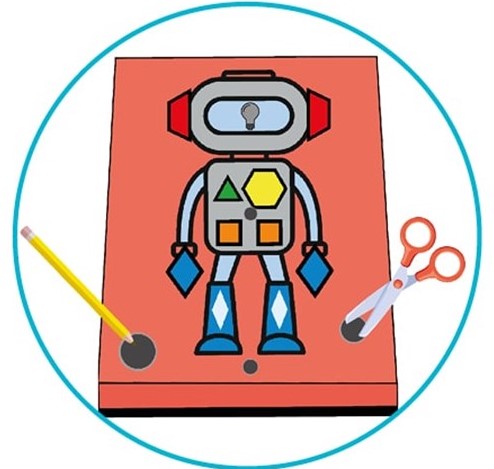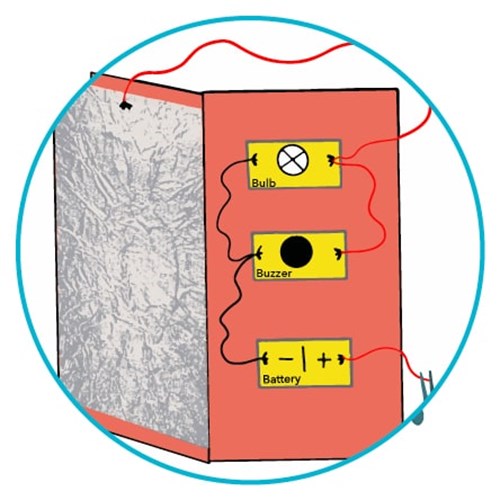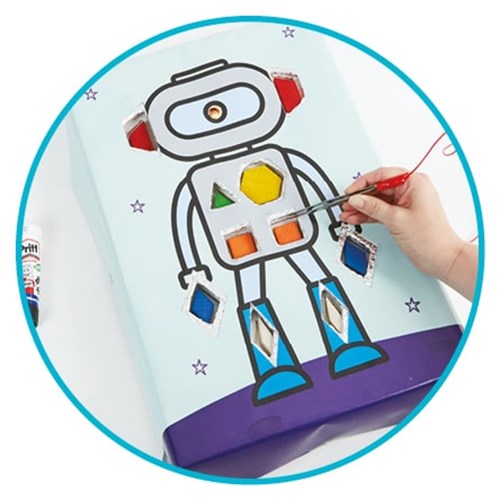How to: Electric circuits
It can be difficult finding fun and engaging ways to teach electric circuits at KS1 and KS2, and the whole concept of teaching electricity can seem a little daunting.
The truth is children’s learning can be enhanced by creating activities using even the simplest of electrical circuits.
One of our favourites is challenging your pupils to create their own circuit activity boards, taking inspiration from one of their favourite board games.
What you’ll need
- Cell holder
- Bulb holder x2
- Bulb
- Cell
- Crocodile leads
- Tweezers
- Aluminium foil
- 1 box (cereal or shoe boxes work best)
- Scissors
- Small prizes to pick up
- Pens and pencils to decorate
- Sticky tape

Step 1:
Think up a character and draw it on your box! It can be a person, an animal, an alien, a robot… anything you can think of!
Step 2:
Draw some shapes or spots of different sizes on your character and cut them out. Make sure you pick a spot for your bulb and cut a hole here too.

Step 3:
Flip your box over to the back and tape a big piece of foil to the back of the box. Flip the box over again and cut out the foil in your circles. Fold the edges of the foil over the edges of the spots.
Step 4:
It’s time to build your circuit! Make sure you attach the + positive wire (the red wire) securely to the foil. When the tweezers touch the foil, the circuit is complete, the power flows, the light illuminates and the buzzer buzzes! In other words, the tweezers and the foil are acting as the switch in the circuit.

Step 5:
Poke the bulb through the hole from underneath the box and tape in place.
Step 6:
Test your circuit by touching the tweezers to the foil in one of your spots. If the bulb lights up and the buzzer sounds, you’re good to go!
Step 7:
Place a small object in each of the spots and try to pick them up with the tweezers without setting off the alarm!

Try this fun electric circuit game out as a nice back-to-school activity, or even test it out at home during the rest of the summer holidays. Kids can learn more about electricity and how it works while building and creating their own electric circuits. Doing this activity develops a range of various skills, from motor skills whilst building to communication skills.